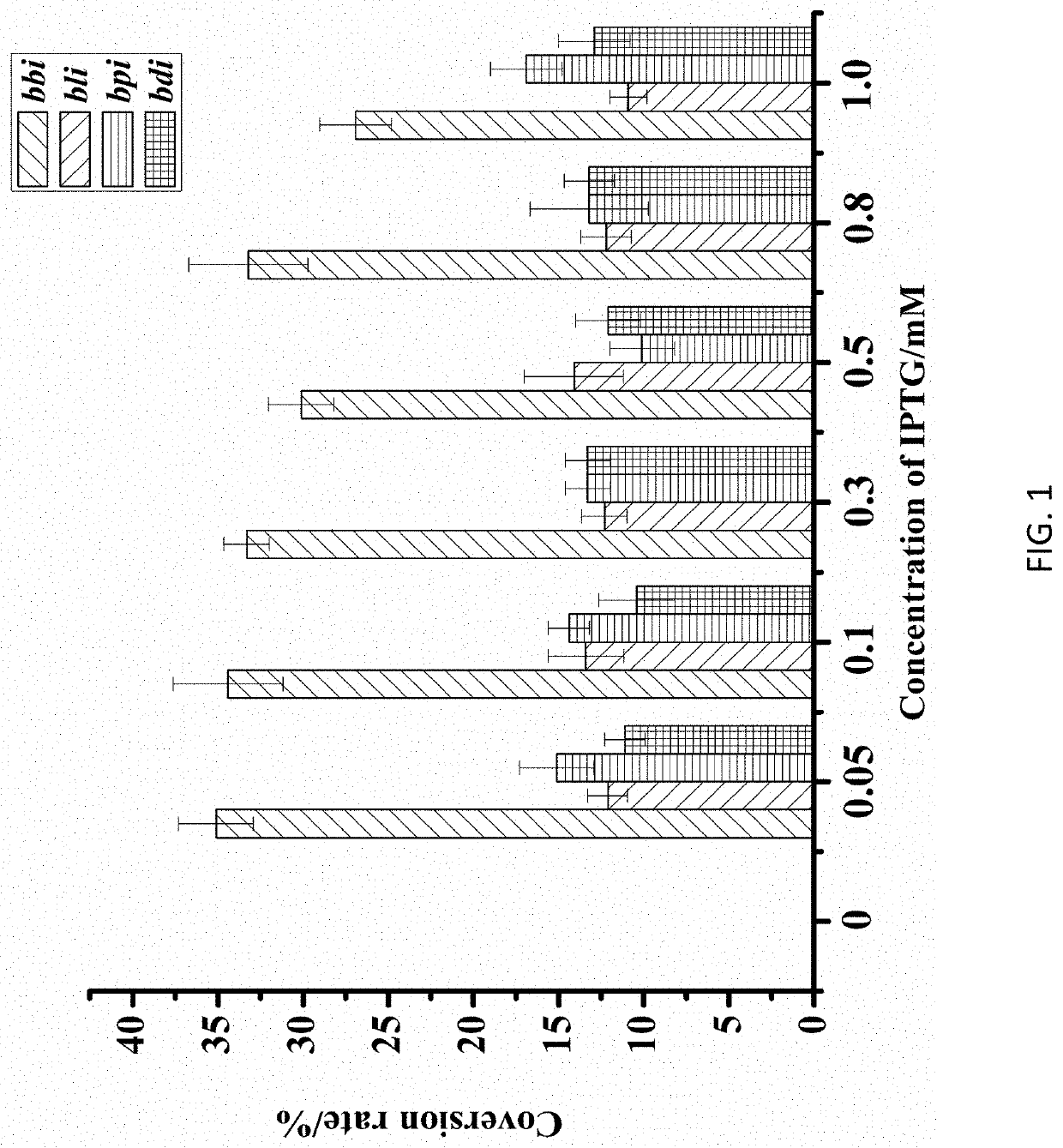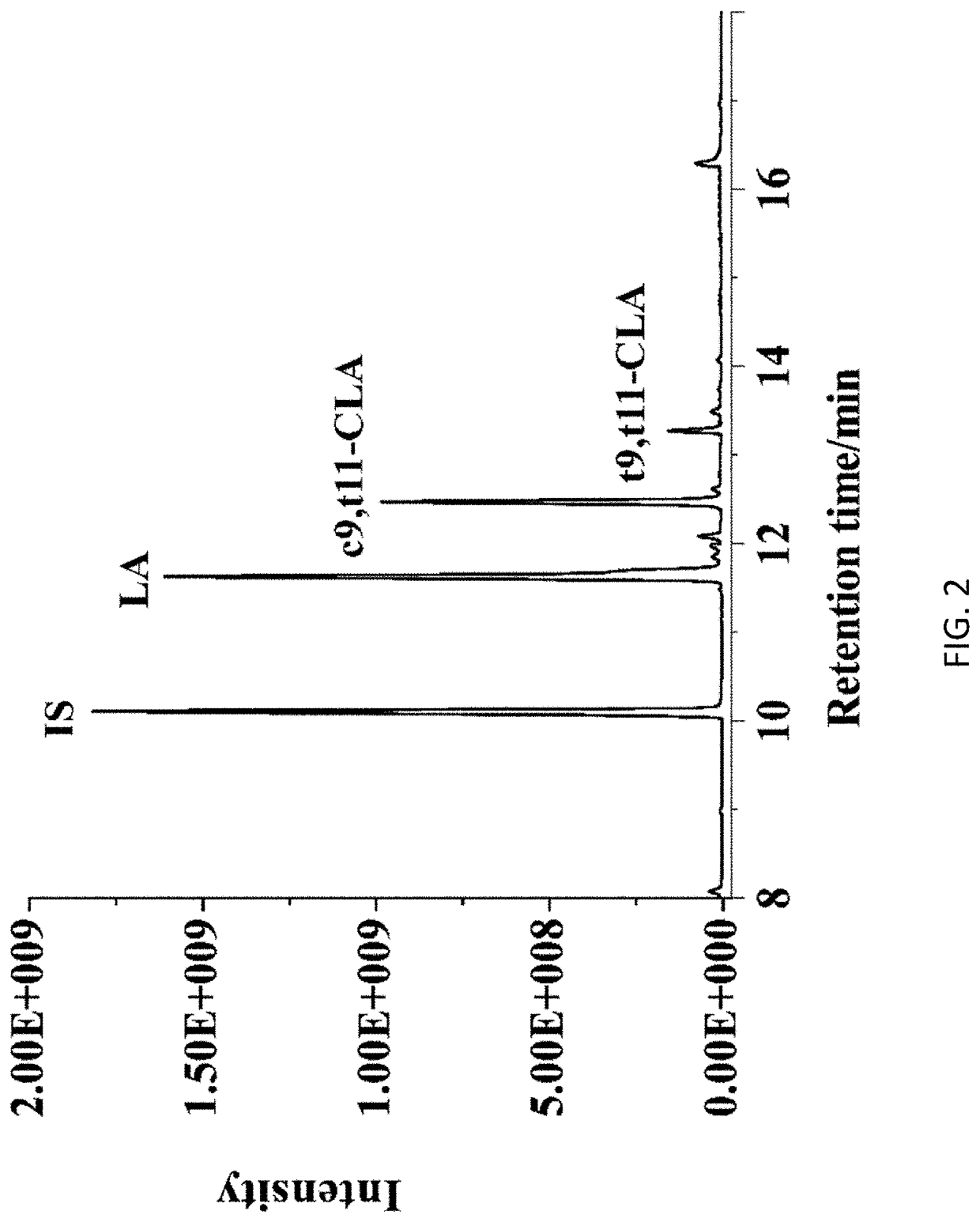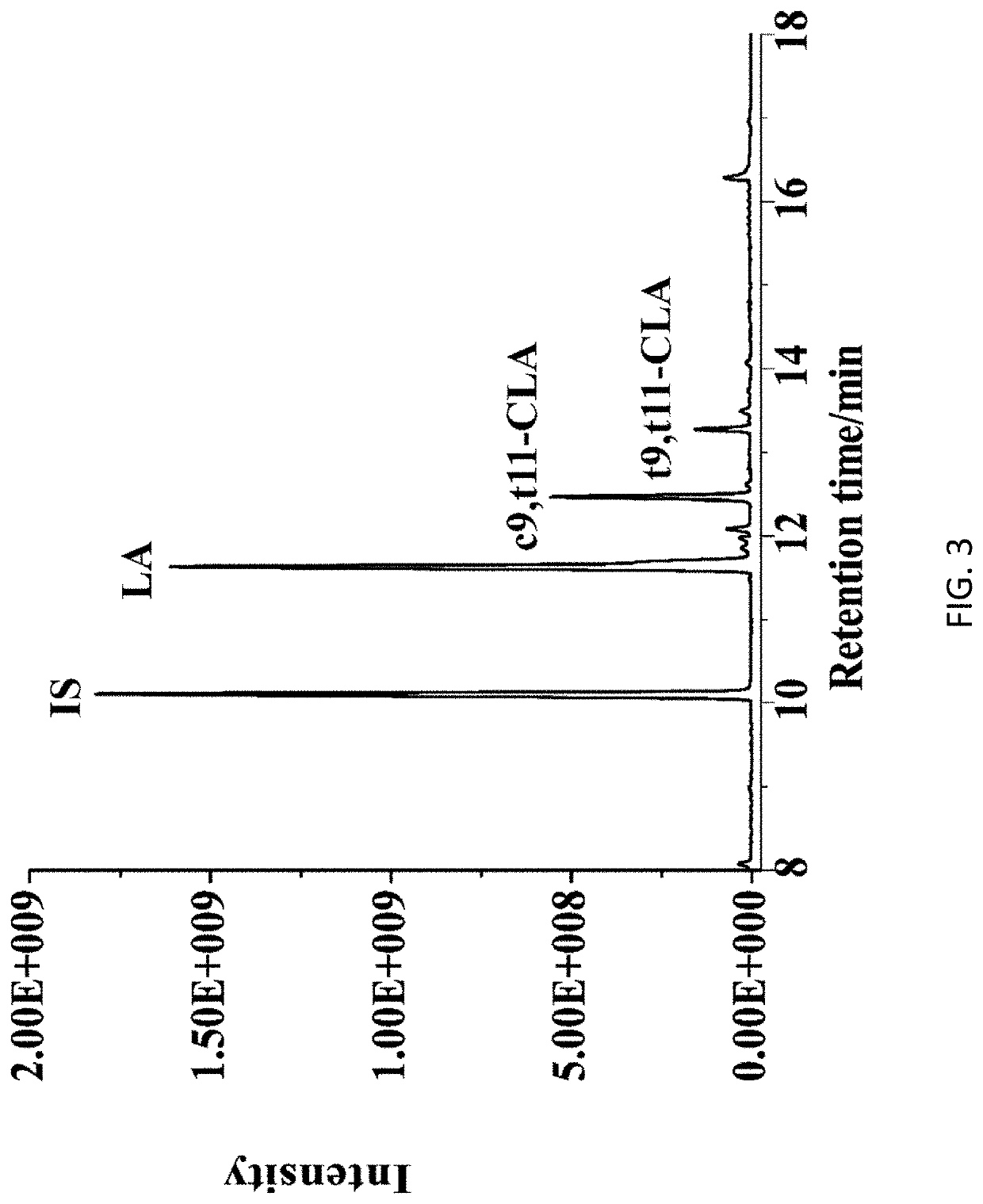Linoleic Acid Isomerase and its Application in Production of Conjugated Linoleic Acid
a technology of isomerase and linoleic acid, which is applied in the direction of cis-trans-isomerase, biochemistry apparatus and processes, enzymes, etc., can solve the problems of many toxic by-products poisoning the environment and human body, small amount of natural linoleic acid, and inability to meet the market demand for conjugated linoleic acid, etc., to achieve easy culture, low price, and abundant source
- Summary
- Abstract
- Description
- Claims
- Application Information
AI Technical Summary
Benefits of technology
Problems solved by technology
Method used
Image
Examples
example 1
of Genes for Coding Linoleic Acid Isomerase
[0099]Transcriptomics data of Bifidobacterium breve CGMCC NO. 11828 (recorded in the text of the patent application with the publication number of CN105925514A) under stress of linoleic acid were collected through a PacBio sequencing platform, wherein sampling time points were the 3rd h, 8th h and 15th h respectively. It was found through bioinformatic analysis that there were totally 8 genes with the gene transcription levels increased in the Bifidobacterium breve CGMCC NO. 11828 at the three time points, these 8 genes were respectively noted as the genes for coding “unknown protein 1”, “melibiose carrier protein”, “ribokinase”, “linoleic acid hydratase”, “unknown protein 2”, “transcriptional control protein”, “ribose-binding ABC channel protein 1” and “ribose-binding ABC channel protein 2” according to the change amplitude of the transcription level, wherein the transcription level of the gene for coding the “unknown protein 1” at the 8th...
example 2
f Genes for Coding Linoleic Acid Isomerase
[0101]A bacterial solution of Bifidobacterium breve CGMCC NO. 11828 was picked from a bacteria storing tube, streaked on an MRS solid culture medium and was cultured in a 37° C. constant-temperature anaerobic chamber for 48 h, so as to obtain a single colony; the single colony was picked, an MRS liquid culture medium was inoculated with the single colony, stationary culturing was continued in the 37° C. constant-temperature anaerobic chamber for 24 h, and activation continued for 3 generations to obtain an activated bacterial solution; an MRS liquid culture medium was inoculated with the activated bacterial solution according to the inoculation quantity of 1% (v / v), and culturing was performed in the 37° C. constant-temperature anaerobic chamber for 24 h, so as to obtain a bacterial suspension; the obtained bacterial suspension was centrifuged under the conditions of 25° C. and 12000 g for 10 min to obtain wet bacterial cells; genome DNA in ...
PUM
| Property | Measurement | Unit |
|---|---|---|
| pH | aaaaa | aaaaa |
| concentration | aaaaa | aaaaa |
| concentration | aaaaa | aaaaa |
Abstract
Description
Claims
Application Information
 Login to View More
Login to View More - R&D
- Intellectual Property
- Life Sciences
- Materials
- Tech Scout
- Unparalleled Data Quality
- Higher Quality Content
- 60% Fewer Hallucinations
Browse by: Latest US Patents, China's latest patents, Technical Efficacy Thesaurus, Application Domain, Technology Topic, Popular Technical Reports.
© 2025 PatSnap. All rights reserved.Legal|Privacy policy|Modern Slavery Act Transparency Statement|Sitemap|About US| Contact US: help@patsnap.com



